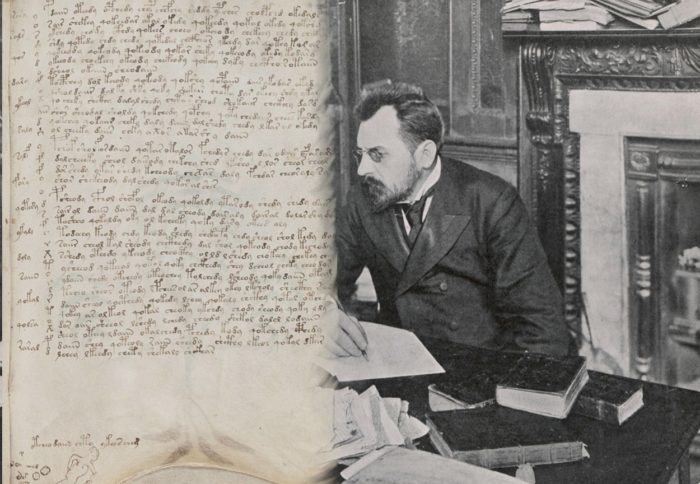
The Voynich Manuscript – The Most Mysterious Text In The World
- By
- January 17, 2019
- May 8, 2022
- 11 min read
- Expert Opinion
- 3
- Posted in
- Conspiracy Theory Analysis, Historical
While some regard it as a hoax from medieval times, others look upon the Voynich Manuscript as one of the great unsolved mysteries of both history and our contemporary times. As we will examine, allegations of a hoax don’t really hold water. However, decades upon decades of research has so far failed to crack the coded language that resides within the 240 remaining pages of vellum (animal skin). Some pages are missing – thought to be 28 in total. What might have resided within these pages, and whether their removal was purposeful or not will likely remain a mystery within a mystery.
Even codebreakers from the two world wars of the twentieth century have failed to reveal the details in these unknown handwr...
Fact Checking/Disclaimer
The stories, accounts, and discussions in this article may go against currently accepted science and common beliefs. The details included in the article are based on the reports, accounts and documentation available as provided by witnesses and publications - sources/references are published above.
We do not aim to prove nor disprove any of the theories, cases, or reports. You should read this article with an open mind and come to a conclusion yourself. Our motto always is, "you make up your own mind". Read more about how we fact-check content here.
Copyright & Republishing Policy
The entire article and the contents within are published by, wholly-owned and copyright of UFO Insight. The author does not own the rights to this content.
You may republish short quotes from this article with a reference back to the original UFO Insight article here as the source. You may not republish the article in its entirety.
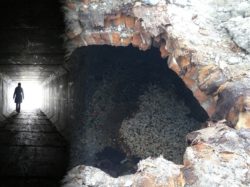
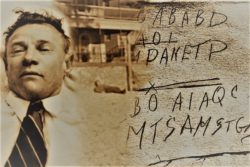
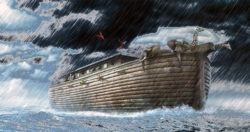
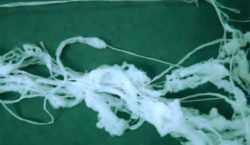


3 Comments
UFO Insight does not take responsibility for the content of the comments below. We take care of filtering profanity as much as we can. The opinions and discussion in the comments below are not the views of UFO Insight, they are the views of the individual posting the comment.
Newest comments appear first, oldest at the bottom. Post a new comment!
There is a key to cipher the Voynich manuscript.
The key to the cipher manuscript placed in the manuscript. It is placed throughout the text. Part of the key hints is placed on the sheet 14. With her help was able to translate a few dozen words that are completely relevant to the theme sections.
The Voynich manuscript is not written with letters. It is written in signs. Characters replace the letters of the alphabet one of the ancient language. Moreover, in the text there are 2 levels of encryption. I figured out the key by which the first section could read the following words: hemp, wearing hemp; food, food (sheet 20 at the numbering on the Internet); to clean (gut), knowledge, perhaps the desire, to drink, sweet beverage (nectar), maturation (maturity), to consider, to believe (sheet 107); to drink; six; flourishing; increasing; intense; peas; sweet drink, nectar, etc. Is just the short words, 2-3 sign. To translate words with more than 2-3 characters requires knowledge of this ancient language. The fact that some symbols represent two letters. In the end, the word consisting of three characters can fit up to six letters. Three letters are superfluous. In the end, you need six characters to define the semantic word of three letters. Of course, without knowledge of this language make it very difficult even with a dictionary.
Much attention in the manuscript is paid to the health of women for the purpose of giving birth to healthy offspring.
And most important. In the manuscript there is information about “the Holy Grail”.
I am ready to share information, but only with those who are seriously interested in deciphering the Voynich manuscript.
Nikolai.
I cannot believe anyone would go to the enormous effort required to author a thing like the “Voynich code” just as a hoax.
Does that idea really make any sense?
One author has gone as far as to say it is all “plagiarized” from “other sources”, many of which were “copied”, they say, in the latter using vernacular of a much more benign nature.
Could this person have a stake in the idea that modern patented “medicines” are good for us (even though many have caused untold millions of deaths) and that herbal medicine are not of any serious use. It almost seems that way, as the pooh-pooh the manuscript with a sniff.
I’m not Roman Catholic but aren’t the Jesuits and Society of Jesus the same thing?